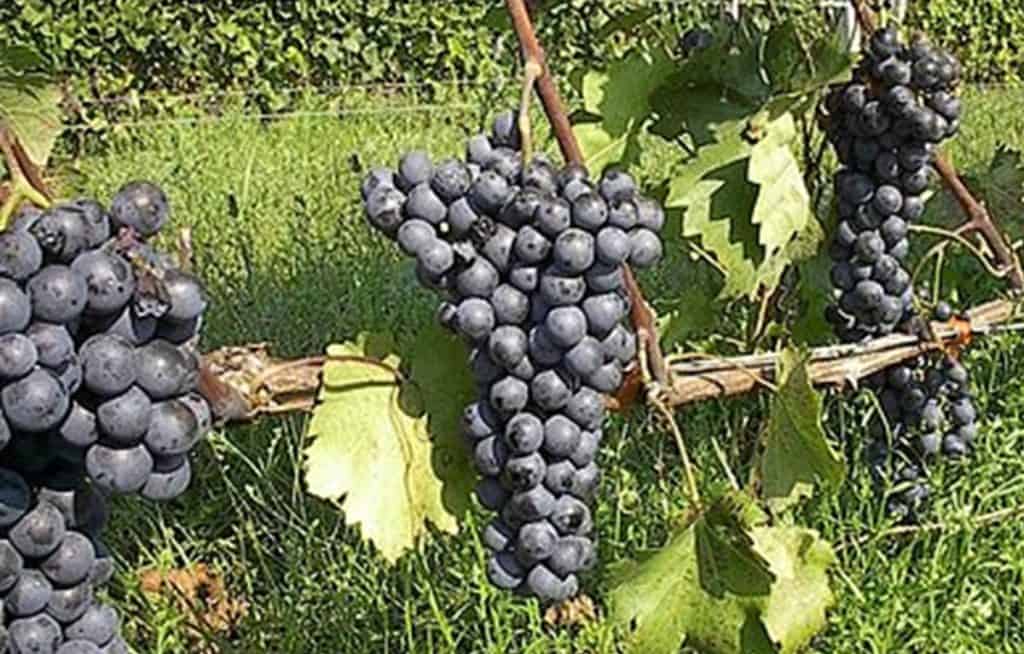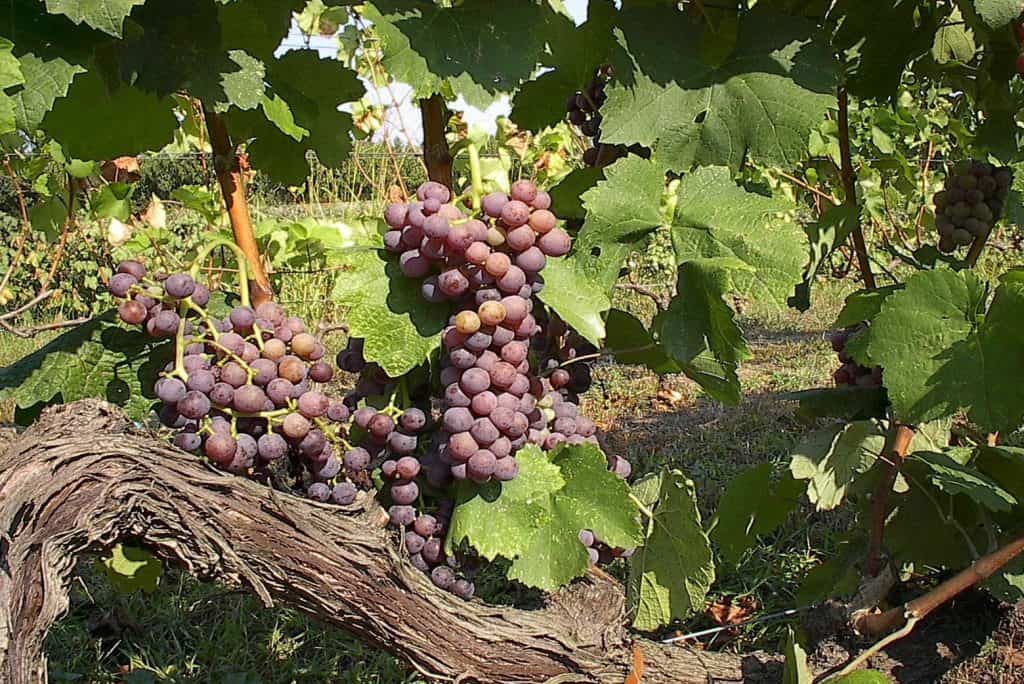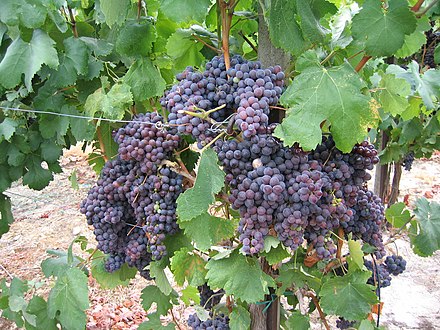The Greeks gave the world the art of poetry, drama, sculpture, and music. They also bestowed upon all future generations the understanding of the art and pleasure of fine dining. The Greeks knew that philosophy, “the love of wisdom” could only be practiced at a symposium or “drinking party” where artists and philosophers would gather to eat and drink to their own and each other’s health.
In the second century B.C., the first cookbook ever written was completed by the Epicurean philosopher, Archestratus. Then around 200 A.D., another Greek, Athenaeus, compiled the first encyclopedia of cooking, which he called Delpnosophistae, or the philosophy of dining. From the dawn of civilization, the Greeks understood the vital link between the “good life” and good living.
Top left: Assyrtiko is a multi-purpose variety. As it ripens, it maintains its acidity and is similar to Riesling. It is native to the island of Santorini.
Top right: Moschofilero is a Blanc de gris variety. It is one of the few grapes that offers a crispness in both still and sparkling styles. It is native to Mantineia, in Arcadia in the Peloponnese.
Bottom left: Agiorgitiko (St. George’s grape) is a variety native to Nemea that grows mainly in the Peloponnese. It creates a fruity red. Its sensory attributes are similar to Beaujolais Nouveau but, unlike its French counterpart, the St. George ages well.
Bottom right: Kotsifali is a variety grown on Crete. Mandilaria or Syrah are often blended with kotsifali to increase color.
It was the Greeks who first made wine around 1500 B.C. They then took their new and unique art to other parts of the ancient world, including Italy, Spain, Russia, and in about 600 B.C., to France. Hence, centuries before Burgundy, Beaujolais, and Champagne, the wines the French made and drank, and were making famous, were Greek.
Today, anyone can be a part of the wonderful Greek tradition of culinary pleasures that stretch back thousands of years. And although you can no longer talk with Socrates or Plato, walk in an olive grove with Aristotle, or see a play by Sophocles, you can still sip a glass of Greek wine, some of the best in the world.
***

In the ancient Greek world Dionysus was the god of winemaking, orchards and fruit, vegetation, fertility, festivity, insanity, ritual madness, religious ecstasy, and theatre. He was quite busy tending to his duties. He was portrayed in art and sculpture as a young, energetic, and dynamic person who was one of the Twelve Olympians who passed his days without suffering the annoyance of clothing, but kept his head adorned with clusters of grapes and fruit.
[Of note, it is interesting that the Roman god of winemaking, Bacchus, who was virtually a clone of Dionysus, was frequently portrayed as an old and wise individual, wrapped in a toga and an assortment of sashes and belts.]
Postcards relative to Greek wine, both vintage and modern, are mysterious. There is a delightful set of modern cards that show the roughly 22 varieties of grapes grown in Greece to produce wine – it is a 24-card set.
There are many cards that show Greek gods. Some serious, some comic. The only American card of Dionysus I have found is the one above showing a statue by Edward McCartan that is exhibited in the Brookfield Gardens in South Carolina.
McCartan was a native of Albany, New York, who studied at the Pratt Institute and the Art Students League of New York. He is primarily known for his sculptures of the goddess Diana and young women. His most famous piece and one of his earliest works may be Girl Drinking from a Shell, c. 1915, currently at the Reading (Pennsylvania) Public Museum. Also, his well-known Dream Lady, from 1922, is in Lincoln Park, Chicago.

Food & Wine Magazine has an appropriate commentary on Greek wines. Greek wines may be among the most underrated on the planet. Why, is a mystery, as the Greeks have been making wine since around 2000 B.C.
Certainly, the quality of Greek wines has improved dramatically [in recent decades], and more of them have been appearing in the United States. In both retail settings and on restaurant wine lists — especially the latter, given the excellent food-friendliness of the Greek white wine in particular — the wines of Greece are on the ascent.
For fans of lively whites like Sauvignon Blanc and Albariño, Greek white wine offers astounding quality for a reasonable cost. While Greek reds are not as uniformly compelling, the best bottlings are terrific.
Wine grapes are grown all over Greece. A few top regions are the Cyclades, especially Santorini, where Assyrtiko and other vines are tied into a basket shape to protect the fruit against the continuous wind; the Peloponnese peninsula, particularly Neméa, which produces full-bodied, juicy reds like Agiorgitiko; and Náoussa in Macedonia, the heart of Xinomavro. The wines of Crete are also growing in popularity – this is a part of Greece to have on your radar.
There [are seven grape varieties you should] familiarize yourself with as you delve into the world of Greek wine. They may not be as easy to ask for at your favorite shop or wine bar as, say, Chardonnay or Pinot Grigio, but they’re every bit as delicious.

Lucy Brazier is a British writer, trying to live a quiet life in middle England. She once wrote, “This has left me feeling very inspired … whether to write poetry or drink wine, I’m not quite sure.






Interesting that the postcard depicting Athena pictures a globe that features the Americas, which were unknown to the ancient Greeks. As a goddess, however, Athena likely knew of lands far from Olympus…